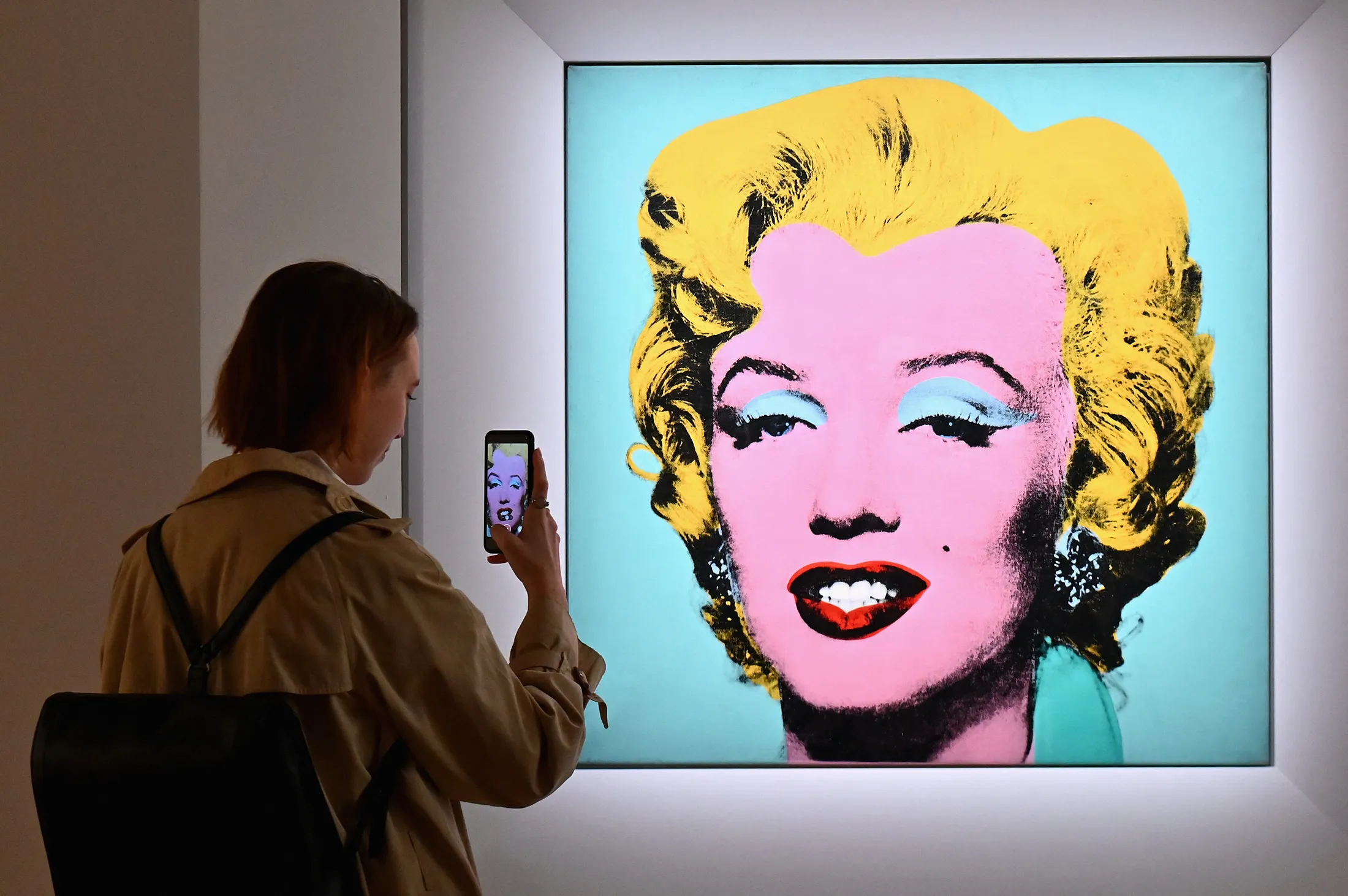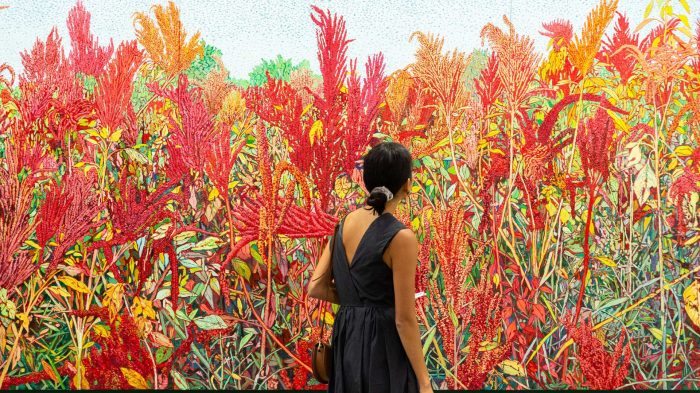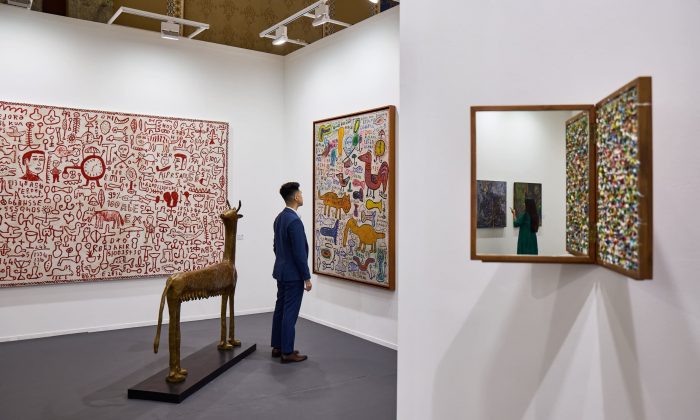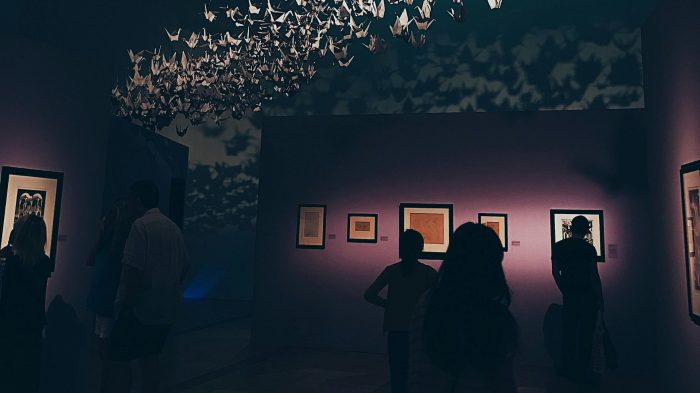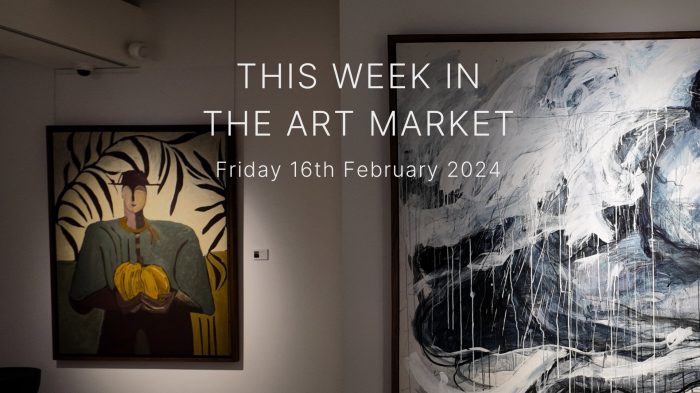From the silkscreen canvases of Andy Warhol to the kitschy collectibles of Jeff Koons, the passionate love affair between the fine art world and Marilyn Monroe is one that goes back decades. It emerged amidst Monroe’s meteoric ascent to stardom in the 1950s, but has sustained its own irresistible obsession till the 21st Century, with artists continuing to make tributes to her memory. Indeed, in a time when contemporary film celebrities and social media stars are proliferating in excess, few can claim to have commanded the art world’s attentions as long as Marilyn has.
This all leads one to wonder, what has fuelled this artistic fixation with the mesmerising film star? Why have so many artists looked toward her as a muse, and how has this fascination sustained itself up till now?
Born as Norma Jeane Mortenson in 1926, the young woman caught a lucky break when she was noticed by a photographer while working at a munitions factory. Having gotten her start, she worked her way through the modeling and acting industry, becoming known for her comedic “blonde bombshell” characters in box office hits like Niagara, Gentlemen Prefer Blondes and How to Marry a Millionaire. Much of her fame was built upon public perceptions of the young actress as a sex symbol: many of her most profitable films featured Monroe clad only in a towel or a thin sheet, and her nude photographs were utilised in the cover of the pioneering issue of Playboy.
Despite her popularity, Monroe was an enigma – a symbol of the ultimate desire, and yet, beneath the polished veneer, she was a deeply complex person who struggled to assert her own true self. In later years, Monroe sought to cast off her sex symbol image and play more nuanced acting roles, taking acting classes and workshops and working toward becoming a sophisticated actress in her own right — despite the disruption this could pose to Monroe’s career in Hollywood.
In 1962, the world was rocked to its core when it was announced that Marilyn Monroe had passed away at the age of 36. Subsequent revelations revealed that Monroe had struggled with substance abuse and mood disorders throughout her career, irreversibly complicating Monroe’s mythos: on one hand, the sexy, vivacious and confident actress who served as vessel for her audiences’ deepest desires; but on the other hand, a deeply complicated human being with her own very real struggles.
Artists continue to be captivated by Monroe’s image for several reasons. Her well-documented personal struggles and professional triumphs provide a rich narrative for artistic exploration. Her life and image encapsulated the superficiality of celebrity culture and mass media, at a time when the newfound prevalence of film transformed American society and the world at large. The contrast between the infamous Marilyn Monroe and her true self was one that audiences struggled to reconcile, and exposed the way popular media had warped public perceptions of the actress.
Furthermore, Monroe’s image is deeply ingrained in our collective cultural consciousness. Her blonde hair, red lips, and the iconic white dress blowing up around her as she stands over a subway grate – these images have become part of our visual language, instantly recognisable in any context. As artists engage themselves with popular cultural discourse, Monroe’s image has been endlessly remixed, reinterpreted and recontextualised, with each artist bringing their unique perspective to the Monroe mythos.
Let’s now take a look at some of the most recognisable artworks featuring Marilyn’s image, tracing her legacy from the glitz and glamor of 1950s Hollywood to the modern day, where artists have become much more self-reflexive and critical in examining Monroe’s image.
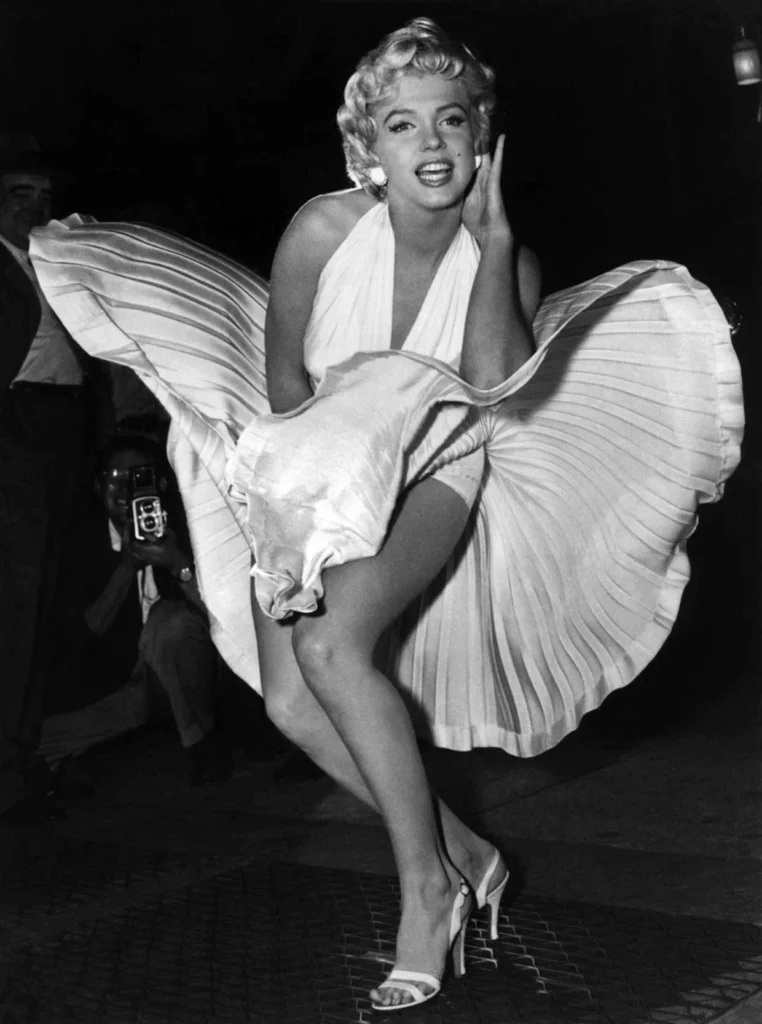
Sam Shaw’s iconic photograph had been captured on the set of the film Seven Year Itch, and is perhaps one of the most well-known photographs ever captured. Depicting the actress at the height of her fame, Monroe stands above a ventilation grate in New York, her white dress billowing in the wind. Here, Monroe embodies the sensuality, dynamism and confidence that came to characterise her career. Interestingly, while the photograph seems to depict a spontaneous moment, it was actually a staged publicity event planned by Shaw himself.
Among the most notable artists who have used Marilyn Monroe’s image in their art is Andy Warhol. Andy Warhol’s silkscreen print Shot Sage Blue Marilyn (1964) was created two years after Monroe’s demise, and depicts the vivacious actress in unnaturalistic, oversaturated colors. In the print, Monroe’s famous smile seems eerily empty and her eyes appear unfocused — the work emphasizes its materiality as merely a facsimile of the iconic actress, and her inner reality is obscured in favor of the external one.
The work’s name ‘Shot’ was derived from a famous encounter between Warhol and fellow artist Dorothy Podber: Podber had initially been granted permission to “shoot” Warhol’s works, but rather than photographing the Marilyns as expected, she instead fired several bullets into them. The damage was subsequently repaired, but the story remained.
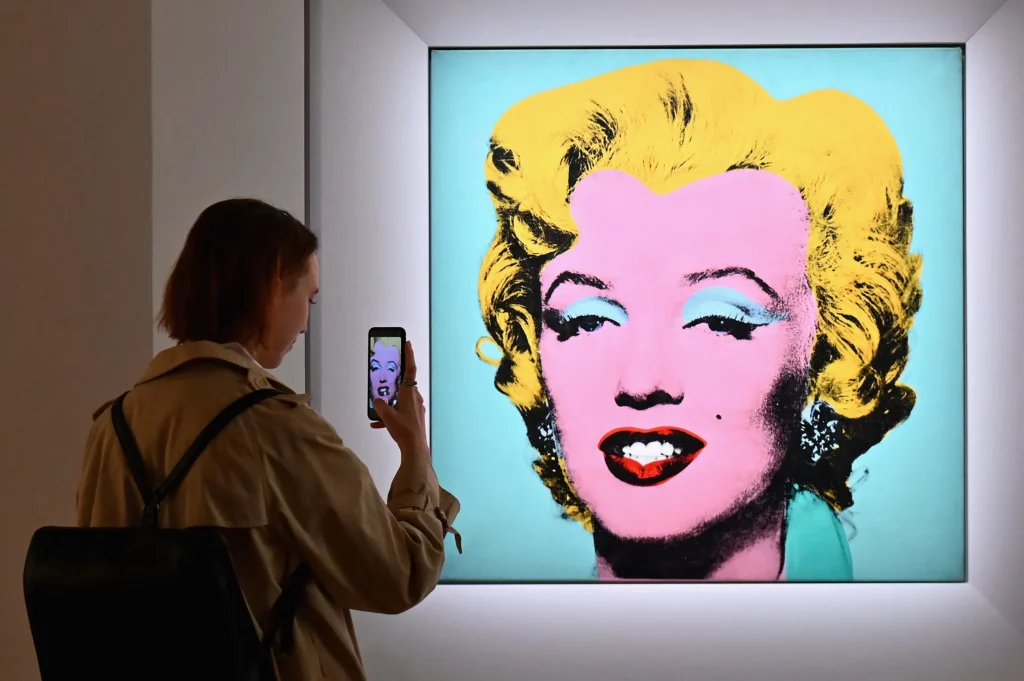
To understand the commercial impact of Monroe-inspired art, we need to look at auction results. In 2022, Warhol’s Blue Shot Sage Marilyn sold for a staggering $195 million in New York, smashing records and becoming the most expensive piece of 20th-century art ever sold at auction. Notably, this price surpassed the previous record set in 2015 by Pablo Picasso’s painting, Les Femmes d’Alger (Version O), which sold for $179.4 million, and the record for the most expensive work by an American artist sold at auction. The sale also broke Warhol’s previous record, which had been held by Silver Car Crash (Double Disaster) sold for $105.4 million in 2013.
These astounding auction results underscore the enduring allure and power of Marilyn Monroe’s image in the art world. The painting was described as “the absolute pinnacle of American pop” and bears witness to Monroe’s undiminished visual power in the new millennium. Despite her tragic life and death, her enigmatic smile and iconic image linger, linking her to another mysterious smile of a distinguished lady, the Mona Lisa.
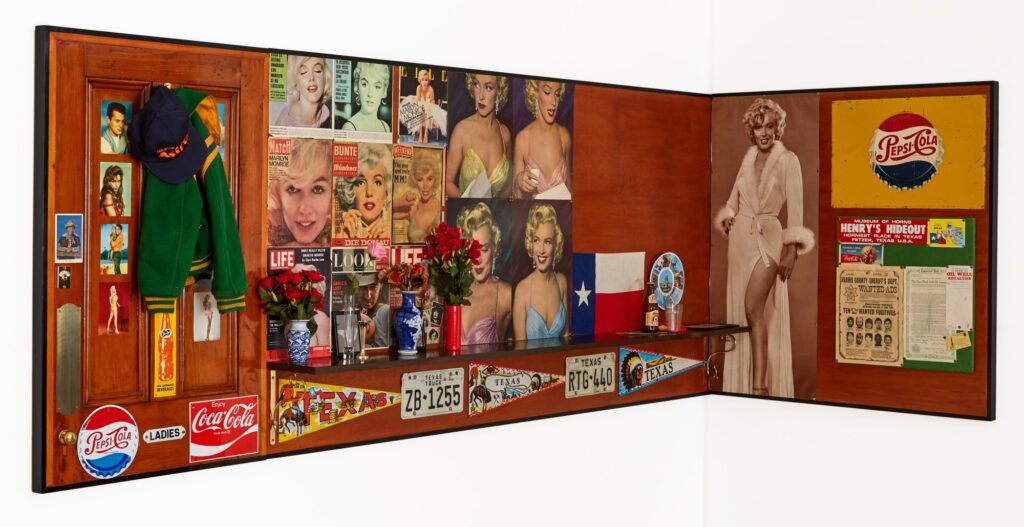
Sir Peter Blake’s unique multimedia work Shrine to Marilyn Monroe, in a Texas Dinner (1989-1990) revisits Marilyn’s image several decades after the height of the actress’ fame, and the heyday of the Pop Art movement. A retrospective exhibition in its own right, the English artist drew from popular American mass media, combining commercial icons of popular drinks, car plates, flags, even varsity jackets and baseball caps, interspersing them with magazine covers and publicity photographs depicting the sensual actress. Blake situates Monroe within a larger visual culture, one that generates its potency based on its endless proliferation and widespread availability. His work critiques the superficiality of celebrity culture amidst this context, suggesting that Monroe’s image had become yet another commodity to be sold and exchanged.
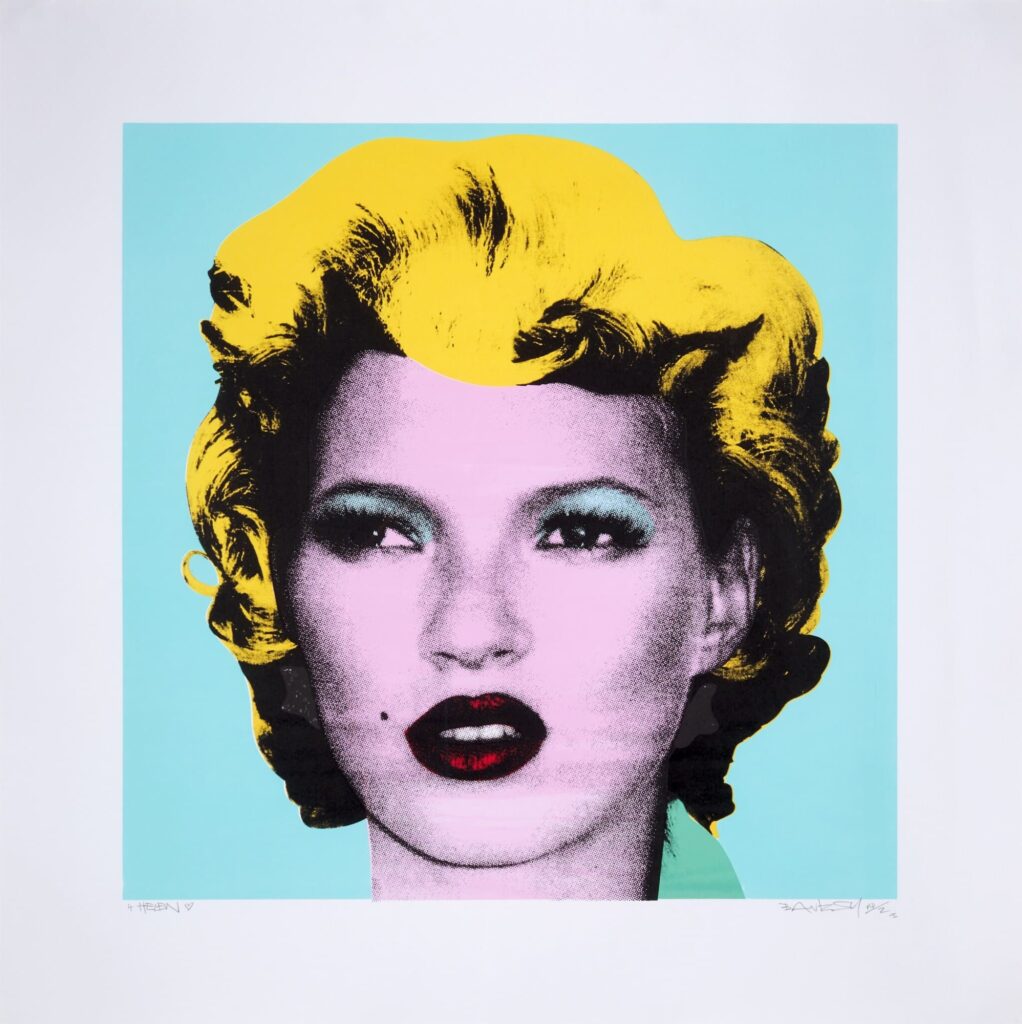
Banksy’s Kate Moss (2005) revisits the trademarks of Warhol’s Shot Sage Blue Marilyn, but substitutes Marilyn Monroe for the contemporary supermodel and fashion icon Kate Moss. Banksy recaptures Marilyn’s distant, ambiguous and unfocused gaze, as well as the unnatural skin tone and saturated palette of Warhol’s originals. The presence of Moss in place of Monroe, however, hints at the persistence of superficial celebrity culture even in the contemporary age. The faces may change, but the system stays the same.
Moreover, Banksy’s Kate Moss series has remained extremely sought after by collectors, consistently attracting bids of hundreds of thousands of dollars. One of Banksy’s Moss prints sold for an impressive GBP 277,200 at an online auction at Sotheby’s in 2021, demonstrating Monroe’s continued influence on the market.

Qiu Shengxian’s Monroe 221108 (2022) is the first entry in this list by a contemporary Chinese artist, and demonstrates how Monroe’s influence has expanded beyond the UK and the US. Qiu replicates the sharp black lines and vibrant colors of the Pop art style but combines this with his own signature human figures: a mass of pink, writhing bodies. Devoid of individual features, they are reminiscent of Keith Haring’s characters but are much more fluid and organic, blending together to form the pink skin of Monroe’s face. Qiu brings Monroe out of the cool artificiality of Warhol and Banksy’s portraits and recaptures Monroe’s warm sensuality and allure. Qiu presents Monroe as no longer simply an image, but a manifestation of collective human memory: an ideal, rather than a facsimile.
Qiu is a significant figure in the “Fashion Pop Art” movement, melding elements of traditional Chinese painting with Western Pop Art while drawing from themes of fashion, celebrity, and pop culture. His appropriation of Monroe’s image, a quintessential Western icon of glamour and fame, is particularly striking given that his work typically features Asian women, archetypes of beauty that appear cool and aloof. In doing so, Qiu engages in a dialogue between Eastern and Western ideals of beauty and femininity, examining the diversity of bodies, appearances and presentations within a seemingly monolithic conception of feminine beauty.
These are but a limited description of a number of portrayals of Marilyn Monroe in the world of fine art. Her ubiquitous image can be found interwoven into works by a range of contemporary artists, including Jeff Koons, Alec Monopoly, Marco Battaglini, Zou Cao and Qiu Shengxian. In each of these artists’ works, Marilyn has been rendered in their own unique styles, demonstrating how deeply artists are engaged with the discourse of popular culture and mass media.

Ultimately, Marilyn Monroe’s enduring influence in contemporary art reflects not only her iconic status but also the unceasing fascination with her persona and what she represents in terms of femininity, vulnerability, and the American dream. Whether portrayed as a tragic figure or a symbol of beauty and glamour, Monroe’s image continues to captivate and inspire artists, serving as a powerful commentary on fame, identity, and the human condition.

